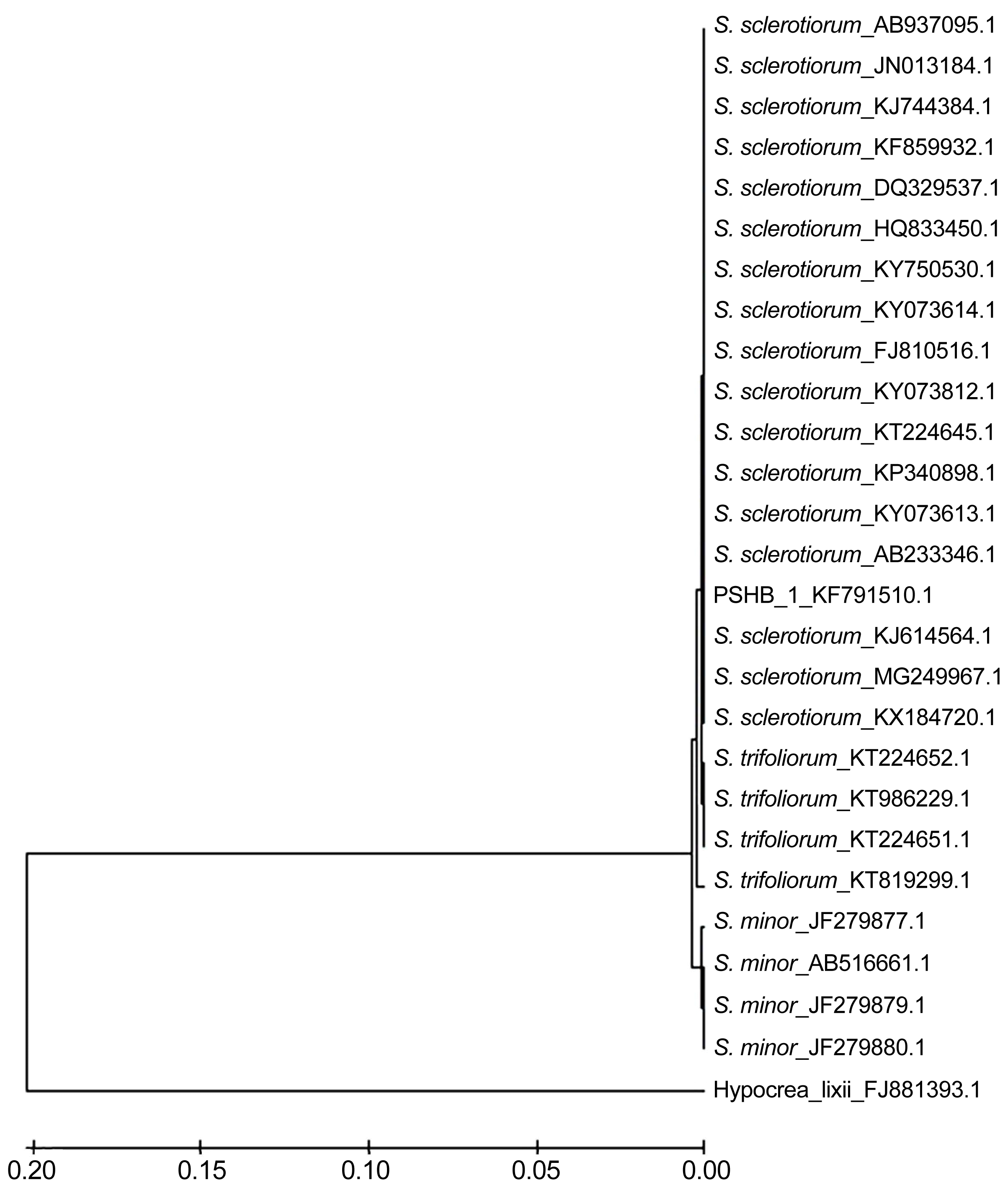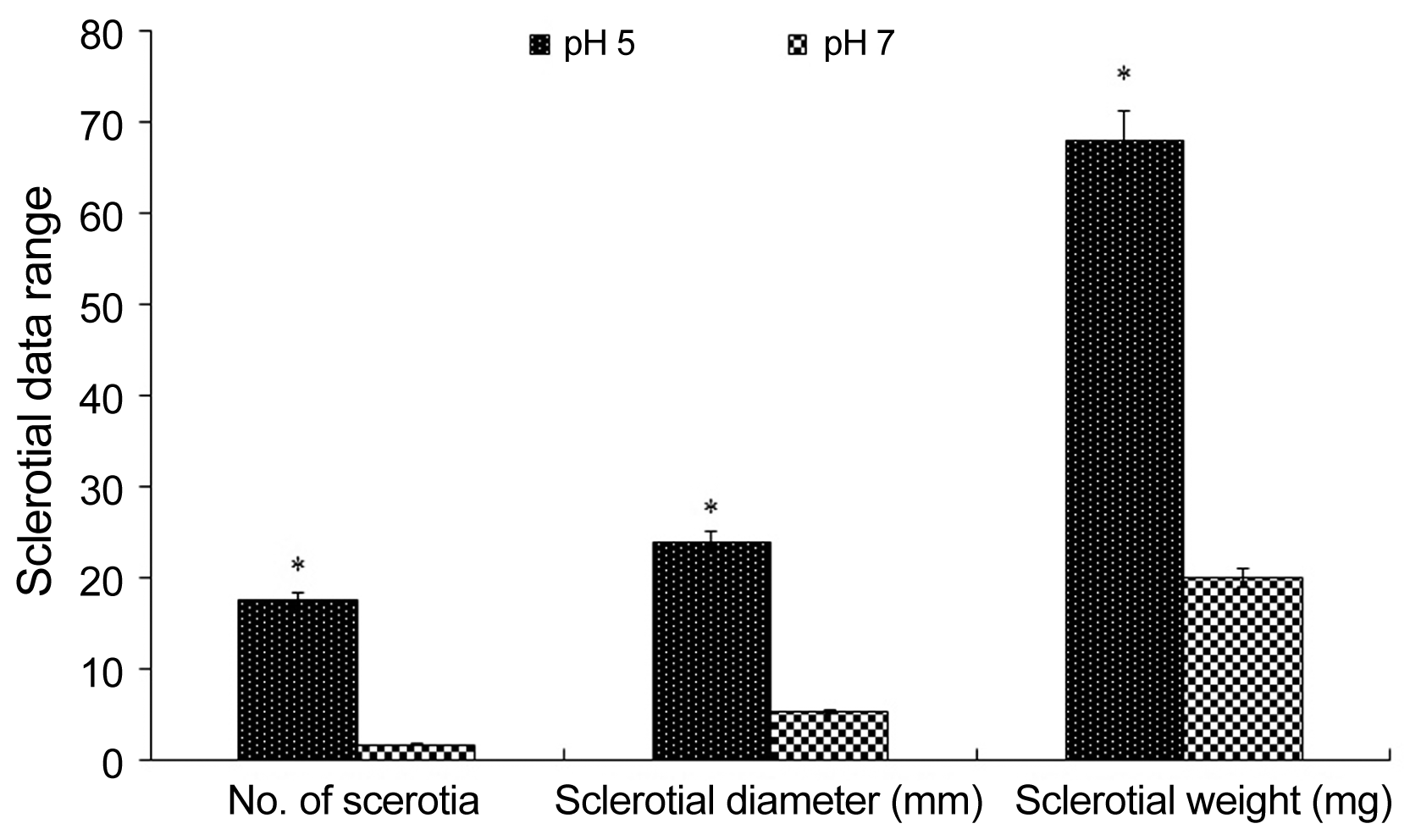Akhter, W, Bhuiyan, MK, Sultana, F and Hossain, MM 2015. Integrated effect of microbial antagonist, organic amendment and fungicide in controlling seedling mortality (Rhizoctonia solani) and improving yield in pea (Pisum sativum L.).
C R Biol. 338:21-28.


Amselem, J, Cuomo, CA, van Kan, JAL, Viaud, M, Benito, EP, Couloux, A, Coutinho, PM, de Vries, RP, Dyer, PS, Fillinger, S, Fournier, E, Gout, L, Hahn, M, Kohn, L, Lapalu, N, Plummer, KM, Pradier, JM, Quévillon, E, Sharon, A, Simon, A, ten Have, A, Tudzynski, B, Tudzynski, P, Wincker, P, Andrew, M, Anthouard, V, Beever, RE, Beffa, R, Benoit, I, Bouzid, O, Brault, B, Chen, Z, Choquer, M, Collémare, J, Cotton, P, Danchin, EG, Da Silva, C, Gautier, A, Giraud, C, Giraud, T, Gonzalez, C, Grossetete, S, Güldener, U, Henrissat, B, Howlett, BJ, Kodira, C, Kretschmer, M, Lappartient, A, Leroch, M, Levis, C, Mauceli, E, Neuvéglise, C, Oeser, B, Pearson, M, Poulain, J, Poussereau, N, Quesneville, H, Rascle, C, Schumacher, J, Ségurens, B, Sexton, A, Silva, E, Sirven, C, Soanes, DM, Talbot, NJ, Templeton, M, Yandava, C, Yarden, O, Zeng, Q, Rollins, JA, Lebrun, MH and Dickman, M 2011. Genomic analysis of the necrotrophic fungal pathogens Sclerotinia sclerotiorum and Botrytis cinerea.
PLoS Genet. 7:e1002230



Bardin, SD and Huang, HC 2001. Research on biology and control of Sclerotinia diseases in Canada. Can J Plant Pathol. 23:88-98.
Bashir, M and Malik, BA 1988. Diseases of major pulse crops in Pakistan-a review.
Trop Pest Manag. 34:309-314.

Bangladesh Bureau of Statistics. 2014. Year Book of Agricultural Statistics - 2014. 26th series. Bangladesh Bureau of Statistics, Ministry of Planning, Government of the People’s Republic of Bangladesh, Dhaka, Bangladesh. 405.
Biggs, AR 1999. Effects of calcium salts on apple bitter rot caused by two Colletotrichum spp.
Plant Dis. 83:1001-1005.


Bolton, MD, Thomma, BP and Nelson, BD 2005. Sclerotinia sclerotiorum (Lib.) de Bary: Biology and molecular traits of a cosmopolitan pathogen.
Mol Plant Pathol. 7:1-16.

Chardonnet, CO, Sams, CE and Conway, WS 1999. Calcium effect on the mycelial cell walls of Botrytis cinerea.
Phytochemistry. 52:967-973.

Cuong, ND and Dohroo, NP 2006. Morphological, cultural and physiological studies on Sclerotinia sclerotiorum, causing stalk rot of cauliflower. Omonrice. 14:71-77.
Dong, X, Ji, R, Guo, X, Foster, SJ, Chen, H, Dong, C, Liu, Y, Hu, Q and Liu, S 2008. Expressing a gene encoding wheat oxalate oxidase enhances resistance to Sclerotinia sclerotiorum in oilseed rape (Brassica napus).
Planta. 228:331-340.


Hatcher, PE and Paul, ND 2001. Plant-pathogen-herbivore interactions and their effects on weeds. In:
Biotic Interactions in Plant-Pathogen Associations, eds. by MJ Jeger and NJ Spence, 193-225. CABI Publishing, Wallingford, UK.

Harveson, RM, Steadman, JR and Urrea, CA 2010. Integrating planting dates and fungicide applications for managing white mold of dry beans in western Nebraska. Online. Plant Health Prog.
Hayakawa, T, Toda, T, Ping, Q, Mghalu, JM, Yaguchi, S and Hyakumachi, M 2006. A new subgroup of Rhizoctonia AG-D, AG-D III, obtained from Japanese zoysia grass exhibiting symptoms of a new disease.
Plant Dis. 90:1389-1394.


Heffer, LV and Johnson, KB 2007. White Mold.
The Plant Health Instructor.

Hossain, MM, Sultana, F, Miyazawa, M and Hyakumachi, M 2014. Plant growth-promoting fungus Penicillium spp. GP 15-1 enhances growth and confers protection against damping- off and anthracnose in the cucumber.
J Oleo Sci. 63:391-400.


Huang, HC, Erickson, RS, Van Hezewijk, B and De Clerck- Floate, R 2005. White mold of Houndstongue (Cynoglossum officinale) caused by Sclerotinia sclerotiorum in Canada.
Plant Dis. 89:1013

Islam, S, Akanda, AM, Prova, A, Islam, MT and Hossain, MM 2016. Isolation and identification of plant growth promoting rhizobacteria from cucumber rhizosphere and their effect on plant growth promotion and disease suppression.
Front Microbiol. 6:1360



Kirk, PM, Cannon, P, David, J and Stalpers, J 2001. Ainsworth and Bisby’s Dictionary of the Fungi. 9th ed. CABI Publishing, Wallingford, UK. 655.
Kohn, LM 1979. A monographic revision of the genus Sclerotinia. Mycotaxon. 9:365-444.
Mahmoud, AGY and Zaher, EHF 2015. Why nuclear ribosomal internal transcribed spacer (ITS) has been selected as the DNA barcode for fungi?
Adv Genet Eng. 4:119.

Maouni, A, Lamarti, A, Aidoun, A, Khaddor, M and Badoc, A 2007. Effect of benzimidazole fungicides and calcium chloride on Alternaria alternata and Penicillium expansum rot during storage of pears. Afr J Biotechnol. 6:1289-1292.
McDonald, MR and Boland, GJ 2004. Forecasting diseases caused by Sclerotinia spp. in eastern Canada: fact or fiction?
Can J Plant Pathol. 26:480-488.

Mendes, MAS, da Silva, VL, Dianese, JC, Ferreira, MASV, dos Santos, CEN, Gomes Neto, E, Urben, AF and Castro, C 1998. Fungos em Plantas no Brasil. 1st ed. Embrapa, Brasília, Brasil. 569.
Mueller, DS, Bradley, C, Grau, CR, Gaska, J, Kurle, JE and Pedersen, WL 2004. Application of thiophanate-methyl at different host growth stages for management of Sclerotinia stem rot in soybean.
Crop Prot. 23:983-988.

National Research Council. 2006. Lablab. Lost Crops of Africa Volume II: Vegetables. 190-205. The National Academies Press, Washington DC, USA.
Oliver, RP and Solomon, PS 2010. New developments in pathogenicity and virulence of necrotrophs.
Curr Opin Plant Biol. 13:415-419.


Prajapati, CR and Narain, U 2008. Effect of fungicides and neem formulations on management of Sclerotinia rot of dolichos bean (Dolichos lablab L.). Agric Sci Digest. 28:133-135.
Prova, A 2012. Isolation, identification and characterization of white mold disease in marigold (Tagetes officinales L.) and hyacinth bean (Lablab purpureus) caused by Sclerotinia sclerotiorum. MS thesis. Bangabandhu Sheikh Mujibur Rahman Agricultural University, Gazipur, Bangladesh.
Prova, A, Akanda, MAM, Islam, S, Sultana, F, Islam, MT and Hossain, MM 2014. First report of stem and pod blight of hyacinth bean caused by Sclerotinia sclerotiorum. J Plant Pathol. 96:603-611.
Prova, A, Akanda, MAM, Islam, S and Hossain, MM 2017. First report of Sclerotinia sclerotiorum cusing pod rot disease on okra in Bangladesh.
Can J Plant Pathol. 39:72-76.

Phipps, PM 1995. An algorithm for prediction outbreaks of Sclerotinia blight of peanut and improving the efficacy of fungicide sprays. Proc Am Peanut Res Educ Soc. 27:23.
Rahman, MME, Dey, TK, Hossain, DM, Nonaka, M and Harada, N 2015. First report of white mold caused by Sclerotinia sclerotiorum on jackfruit. Aust Plant Dis Notes. 10:10
Reis, A, Costa, H and Lopes, CA 2007. Epidemiologia e manejo do mofo-branco em hortaliças. DF: Embrapa Hortaliças, Brasília, Brasil. 5.
Rollins, JA and Dickman, MB 2001. pH signaling in Sclerotinia sclerotiorum: Identification of a pacC/RIM1 homolog.
Appl Environ Microbiol. 67:75-81.



Saharan, GS and Mehta, N 2008. Sclerotinia diseases of crop plants: Biology, ecology and disease management. Springer, Dordrecht, Netherlands. 486.
Sanogo, S and Puppala, N 2007. Characterization of darkly pigmented mycelium isolate of Sclerotinia sclerotiorum on valencia peanut in New Mexico.
Plant Disease. 91:1077-1082.


Schwartz, HF and Pastor Corrales, MA 1989. Bean production problems in the tropics. 2nd ed. Centro Internacional de Agricultura Tropical, Colombia. 726.
Shin, HJ, Kim, CJ and Kim, SB 2007. Optimization of culture medium for rifamycin SV production by Amycolatopsis mediterranei MM2 using statistical designs.
Biotechnol Bioproc E. 12:457-461.

Singh, NK, Singh, RB and Singh, V 2014. Efficacy of fungicides and bio-pesticide against the Sclerotinia sclerotiorum causing Sclerotinia rot of Mustard.
IOSR-JAVS. 7:20-23.

Summerbell, RC, Moore, MK, Starink-Willemse, M and Van Iperen, A 2007. ITS barcodes for Trichophyton tonsurans and T equinum.
Med Mycol. 45:193-200.


Sundar, AR, Das, ND and Krishnaveni, D 1995. In-vitro antagonism of Trichoderma spp. against two fungal pathogens of Castor. Indian J Plant Prot. 23:152-155.
Tian, SP, Fan, Q, Xu, Y and Jiang, AL 2002. Effects of calcium chloride on biocontrol activity of yeast antagonists against the postharvest fungal pathogen Rizopus stolonifer.
Plant Pathol. 51:352-358.

Toda, T, Hyakumachi, M, Suga, H, Kageyama, K, Tanaka, A and Tani, T 1999. Differentiation of Rhizoctonia AG-D isolates from turfgrass into subgroups I and II based on rDNA and RAPD analysis. Eur J Plant Pathol. 105:835-846.
Tu, JC 1997. An integrated control of white mold Sclerotinia sclerotiorum (Lib.) de Bary of beans with emphasis on recent advances in biological control. Bot Bull Acad Sin. 38:73-76.
Wang, Y, Duan, YB and Zhou, MG 2014. Control of Sclerotinia sclerotiorum infection in oilseed rape with strobilurin fungicide SYP-7017.
Can J Plant Pathol. 36:354-359.

White, TJ, Bruns, TD, Lee, SB and Taylor, JW 1990. Amplification and direct sequencing of fungal ribosomal RNA genes for phylogenetics. In:
PCR Protocols: A Guide to Methods and Applications, eds. by MA Innis, DH Gelfand, JJ Sninsky and TJ White, 315-322. Academic Press, New York, USA.

Wilson, CR, DeLittle, JA, Wong, JAL, Schupp, PJ and Gibson, LJ 2005. Adjustment of soil-surface pH and comparison with conventional fungicide treatments for control of lettuce drop (Sclerotinia minor).
Plant Pathol. 54:393-400.

Williams, B, Kabbage, M, Kim, HJ, Britt, R and Dickman, MB 2011. Tipping the balance: Sclerotinia sclerotiorum secreted oxalic acid suppresses host defenses by manipulating the host redox environment.
PLoS Pathog. 7:e1002107



Woodward, JE, Baughman, TA, Baring, MR and Simpson, CE 2015. Comparison of three high-oleic peanut cultivars under varying field conditions in the Southwestern United States.
Peanut Sci. 42:11-17.

Xing, YM, Chen, J, Lv, YL, Liang, HQ and Guo, SX 2011. Determination of optimal carbon source and pH value for sclerotial formation of Polyporus umbellatus under artificial conditions.
Mycol Prog. 10:121-125.

Young, CS, Smith, JA, Watling, M, Clarkson, JP and Whipps, JM 2001. Environmental conditions influencing apothecial production and lettuce infection by Sclerotinia sclerotiorum in field conditions. In: Proceedings of Sclerotinia 2001-the Xl International Sclerotinia Workshop; In : CS Young and KJD Hughes pp 181-182. Central Science Laboratory, York, UK.








 PDF Links
PDF Links PubReader
PubReader Full text via DOI
Full text via DOI Full text via PMC
Full text via PMC Download Citation
Download Citation Print
Print






